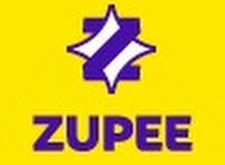It is vital that, as lenders, you observe the rules concerning debt collection. Technology has completely changed how debt collection management is done nowadays. Lenders can become more efficient while maintaining compliance with rules by utilizing technology. In this article, we examine six potent ways that technology improves lenders’ compliance with B2B debt collection activities.
Intelligent Call and Contact Analytics Advanced algorithms are used by technology-driven call and contact analytics tools to track and analyze interactions between debt collectors and debtors. By highlighting potential infractions like the use of offensive language or making excessive contact efforts, these technologies assist in identifying compliance concerns. Lenders can proactively solve compliance issues and guarantee compliance with rules like the Fair Debt Collection Practices Act (FDCPA) by utilizing AI and machine intelligence.
Workflow Automation Lenders can speed up their debt collection procedures while guaranteeing safety at every stage by using technology to automate activities. Lenders can establish and enforce standardized processes for handling accounts using workflow automation technologies, ensuring they fulfill legal and regulatory requirements. Lenders can decrease compliance-related errors and increase efficiency by automating operations like paperwork, follow-up reminders, and deadline tracking.
Secure Payment Processing Secure payment processing is made possible by technology, protecting confidential financial data during debt collection. To guard against potential data breaches that could affect both their firm and the debtors, lenders should use encrypted payment gateway solutions. Lenders can increase confidence with borrowers and adhere to data security standards by implementing secure payment methods.
Compliance Dashboard and Reporting Lenders may view their debt collection activities and compliance performance in real time through compliance dashboards. These dashboards provide thorough analytics and reporting capabilities, enabling lenders to measure performance, keep tabs on critical compliance parameters, and spot areas for development. Lenders can improve compliance efforts by using data-driven decisions by having access to actionable insights.
Document Management and Audit Trails The digitization of document management procedures by lenders due to technology ensures effective record-keeping and establishes thorough audit trails. The information on the debtor, their payment history, and compliance-related records are all securely stored in electronic document management systems. This digital strategy makes audits easier, lowers the possibility of document loss, and provides evidence of compliance efforts when needed.
To sum up, technology has completely transformed the debt collection process, making it more effective, customized, and legal. Lenders can use technology to improve customer service, lower delinquencies, and boost debt recovery rates. Successful debt collection management is made possible by the application of AI, analytics, and segmentation, along with the integration of debt collection systems with current data sources and infrastructure.
Attributed to Manavjeet Singh, MD & CEO, CLXNS
 Newspatrolling.com News cum Content Syndication Portal Online
Newspatrolling.com News cum Content Syndication Portal Online






